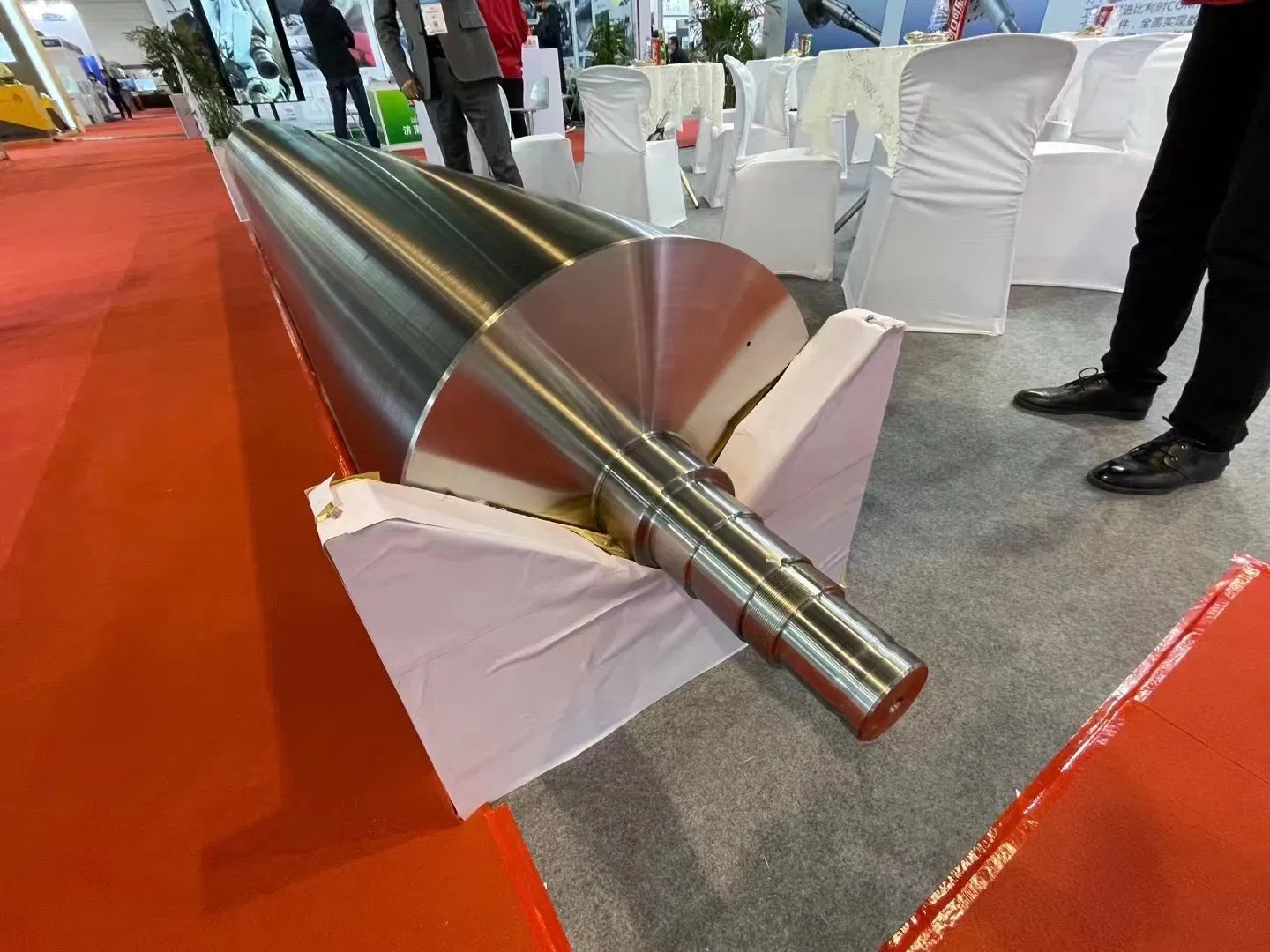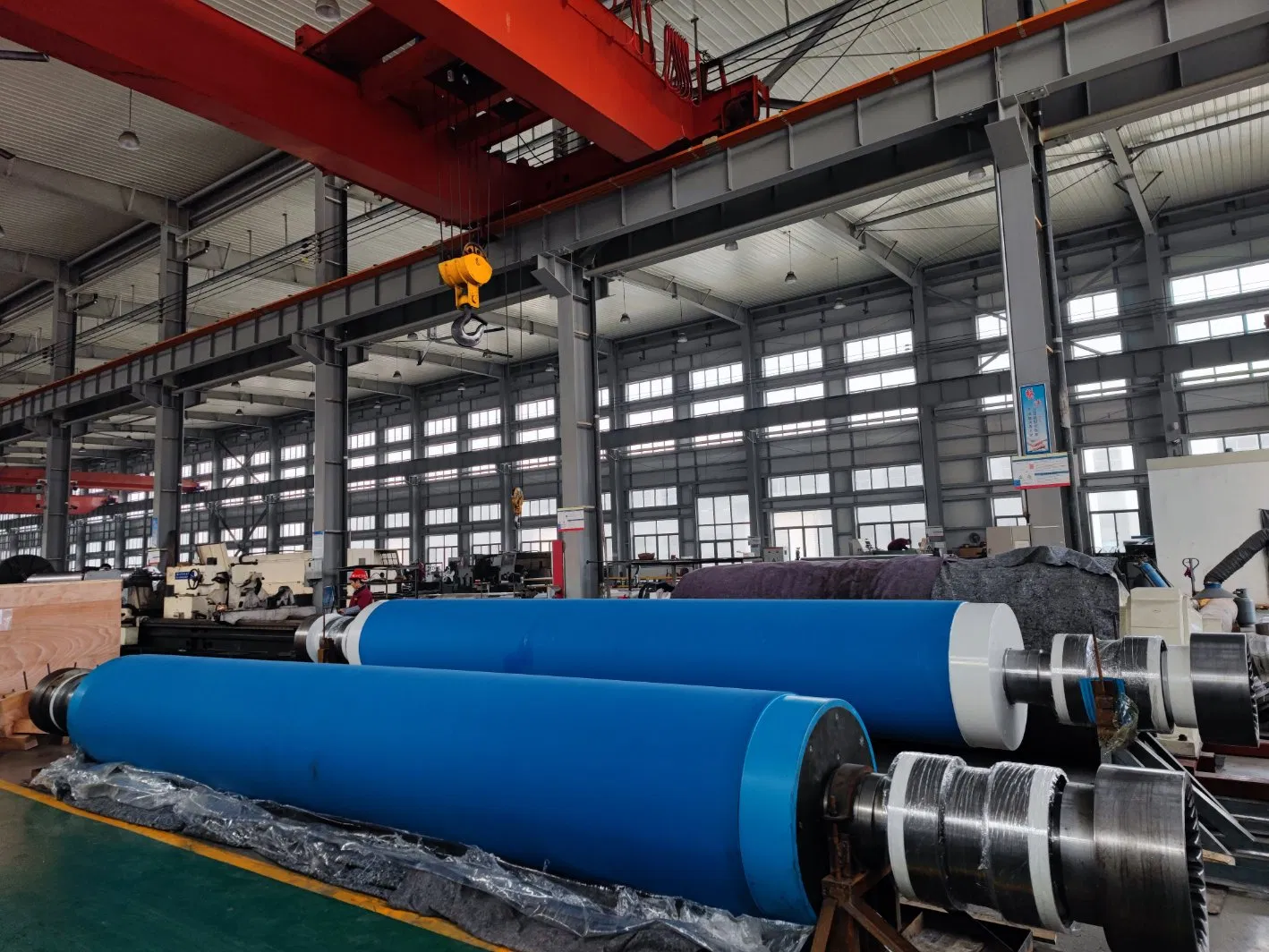Have you ever stopped to consider the sheer complexity behind the machinery that produces everyday items like paper? It's easy to take for granted, but behind the scenes, highly specialized components are working tirelessly. Among these, the blind hole press roll stands out as a critical, yet often unseen, powerhouse. Its design and fabrication are a testament to precision engineering, directly impacting the efficiency and quality of paper production. To be honest, without expertly crafted blind hole press rolls, modern paper machines simply wouldn't achieve their remarkable speeds and dewatering capabilities. This article delves deep into the fascinating world of blind hole press roll manufacture, exploring the intricate processes, the science behind their effectiveness, and why their meticulous production is paramount.
The Critical Role of Blind Hole Press Rolls in Industrial Processes
In the realm of paper and pulp manufacturing, dewatering is a crucial step. After the paper web is formed, it contains an enormous amount of water – often more than 80% by weight. Removing this water efficiently and uniformly is essential for both product quality and energy consumption. This is precisely where press rolls come into play, and specifically, blind hole press rolls offer a distinct advantage. Unlike conventional smooth rolls, blind hole rolls are characterized by thousands of precisely drilled, shallow holes on their surface. These holes aren't just decorative; they serve a vital function: to provide void volume for the water pressed out of the paper web, allowing for more effective and rapid dewatering.
The concept is deceptively simple, but its execution requires immense precision. As the paper web passes through the nip (the contact point) between two press rolls, immense pressure is applied. This pressure forces water out of the web. Without the blind holes, this water would have nowhere to go, leading to hydraulic pressure build-up, which can cause rewetting of the sheet, reduce dewatering efficiency, and even damage the paper web or the roll itself. The blind holes act as tiny reservoirs, instantly collecting the expelled water, thus maintaining a stable dewatering process and preventing rewetting. This mechanism significantly contributes to the final dryness of the paper sheet, which in turn reduces the energy required for subsequent drying stages, making the entire process more sustainable and cost-effective. Many experts agree that optimizing this dewatering stage is one of the most impactful ways to improve overall paper machine efficiency.
Engineering Excellence: The Design Principles Behind Blind Holes
The effectiveness of a blind hole press roll isn't just about drilling holes; it's about drilling the *right* holes in the *right* way. The design principles are rooted in a deep understanding of fluid dynamics, material science, and mechanical engineering.
The Fluid Dynamics Advantage
The pattern, depth, diameter, and density of the blind holes are meticulously calculated. These parameters directly influence the roll's ability to manage water flow under high pressure. For instance, too few holes, or holes that are too shallow, might not provide sufficient void volume, leading to hydraulic pressure. Conversely, holes that are too deep or too large could compromise the structural integrity of the roll surface or lead to uneven dewatering. Engineers use sophisticated simulation software to model water flow and pressure distribution within the nip, optimizing hole geometry for maximum dewatering efficiency without compromising the sheet or the roll. This intricate balance is what sets high-performance press rolls apart.
Material Science and Durability
Beyond the holes themselves, the material of the press roll is paramount. These rolls operate under extreme conditions: high pressure, high speed, fluctuating temperatures, and corrosive environments due to process chemicals. Typically, rolls are made from high-grade steel or cast iron, often coated with specialized materials like rubber, polyurethane, or ceramic composites. These coatings provide specific properties such as abrasion resistance, chemical resistance, and optimal surface friction. The choice of coating also influences the roll's ability to shed water and prevent sticking, which is crucial for continuous operation. Frankly speaking, the synergy between the base material, the blind hole design, and the surface coating is what defines the longevity and performance of the roll.

The Meticulous Process of Blind Hole Press Roll Manufacture
The journey from raw material to a finished blind hole press roll is an intricate dance of precision engineering, advanced machinery, and skilled craftsmanship. It's a process that demands unwavering attention to detail at every stage.
Raw Material Selection and Preparation
It all begins with selecting the right raw materials. Given the immense stresses and operational demands, only high-quality alloys, typically forged steel or specialized cast iron, are considered. These materials are chosen for their strength, durability, and ability to withstand fatigue. Once selected, the raw material undergoes initial machining to create the basic cylindrical shape, often involving rough turning and boring to establish the core dimensions and prepare for subsequent, more precise operations.
Precision Drilling and Machining
This is arguably the most critical stage in blind hole press roll manufacture. Specialized drilling machines, often CNC (Computer Numerical Control) controlled, are used to create the thousands of blind holes. These machines are capable of extraordinary accuracy, ensuring that each hole is drilled to the exact specified depth, diameter, and pattern. The precision here is paramount; even slight deviations can lead to uneven dewatering, vibration, or premature wear. The drilling process itself generates heat and requires careful management of coolants and chip removal. After drilling, the roll surface undergoes further machining, including grinding and polishing, to achieve the required surface finish and dimensional accuracy. This ensures optimal contact with the paper web and proper water shedding.

Balancing and Surface Finishing
Once the holes are drilled and the surface is machined, the roll must be dynamically balanced. Given the high rotational speeds at which these rolls operate, even a slight imbalance can lead to severe vibrations, bearing damage, and compromised paper quality. Sophisticated balancing machines are used to detect and correct any imbalances by adding or removing small amounts of material. Following balancing, the roll often receives its final surface treatment. This could involve superfinishing, chrome plating, or the application of specialized rubber or composite covers. These covers are not merely protective; they are engineered to provide specific properties like hardness, elasticity, and chemical resistance, which are crucial for the roll's performance and longevity. The application of these covers is an art in itself, requiring precise temperature control and bonding techniques to ensure a uniform and durable layer.
Advanced Coating Applications
In my experience, the right coating can dramatically extend the life and improve the performance of a blind hole press roll. Modern manufacturing techniques incorporate advanced coating applications, such as thermal spray coatings (e.g., ceramics, carbides) or specialized polymer compounds. These coatings offer superior wear resistance, corrosion protection, and improved release properties, preventing the paper web from sticking to the roll surface. The application process is highly controlled, often involving robotic systems to ensure uniform thickness and adhesion. This attention to detail in coating is a hallmark of truly optimized dewatering solutions.
Ensuring Peak Performance: Quality Control and Testing
The investment in a blind hole press roll is substantial, and its performance directly impacts the profitability of a paper mill. Therefore, rigorous quality control and testing are integral to the blind hole press roll manufacture process. From the moment raw materials arrive until the finished roll is shipped, multiple checkpoints ensure adherence to the highest standards.
Inspection begins with material certification, verifying the chemical composition and mechanical properties of the base metal. During machining, in-process measurements are constantly taken to ensure dimensional accuracy, hole depth, and pattern consistency. Non-destructive testing methods, such as ultrasonic testing or eddy current testing, are often employed to detect any internal flaws or surface imperfections that could compromise the roll's integrity.
Perhaps the most critical test is dynamic balancing, as mentioned earlier. This isn't just a check; it's a precise adjustment process to ensure the roll operates smoothly at high speeds. Surface roughness and hardness measurements are also taken to confirm the quality of the final finish and coating. Interestingly enough, some manufacturers even perform simulated operational tests, albeit on a smaller scale, to gauge how the roll will perform under actual working conditions. This comprehensive approach to quality assurance is what guarantees that the delivered roll will meet or exceed the demanding performance expectations of a modern paper machine.
Future Horizons: Innovations and Challenges in Press Roll Technology
The field of blind hole press roll technology is not static; it's continuously evolving. Manufacturers face ongoing challenges, such as the demand for higher machine speeds, increased dewatering efficiency, reduced energy consumption, and longer roll life. These challenges drive innovation.
One significant area of innovation is in material science. Researchers are constantly exploring new alloys and composite materials that offer superior strength-to-weight ratios, enhanced corrosion resistance, and better wear properties. The development of advanced ceramic and polymer coatings, for instance, continues to push the boundaries of durability and performance.
Another exciting frontier is the integration of smart technologies. Imagine press rolls equipped with embedded sensors that monitor temperature, vibration, and even dewatering efficiency in real-time. This data could be used for predictive maintenance, allowing mills to identify potential issues before they lead to costly downtime. I've found that the move towards "Industry 4.0" and the "Industrial Internet of Things" (IIoT) is slowly but surely transforming how these critical components are designed, manufactured, and operated.
Furthermore, advancements in manufacturing processes themselves, such as additive manufacturing (3D printing) for complex internal structures or more efficient drilling technologies, hold promise for reducing production times and costs while enhancing design flexibility. The goal remains the same: to create even more efficient, durable, and reliable press rolls that can meet the ever-increasing demands of industrial production. The future of blind hole press roll manufacture is undoubtedly one of continued innovation and refinement.
The Unsung Heroes: Why Expertise in Blind Hole Press Roll Manufacture Matters
In conclusion, the blind hole press roll is far more than just a cylindrical component with holes. It is a highly engineered marvel, a product of meticulous design, advanced manufacturing techniques, and rigorous quality control. Its role in the dewatering process of paper production is absolutely critical, directly impacting efficiency, energy consumption, and product quality.
The expertise required for blind hole press roll manufacture is immense, encompassing deep knowledge of metallurgy, fluid dynamics, precision machining, and surface engineering. Companies that excel in this niche are not just manufacturers; they are partners in optimizing industrial processes, helping their clients achieve higher productivity and sustainability. The next time you hold a piece of paper, perhaps you'll have a newfound appreciation for the unseen, precision-engineered components that made its creation possible.
For more detailed information, please visit our official website:blind hole press roll manufacture
About the author: Dr. Evelyn Reed is a seasoned expert in industrial machinery and precision engineering, with over two decades of experience specializing in the pulp and paper industry. Her work focuses on optimizing manufacturing processes for critical components like press rolls, enhancing efficiency and durability. She is passionate about the intersection of material science and mechanical design, contributing significantly to advancements in dewatering technologies.


